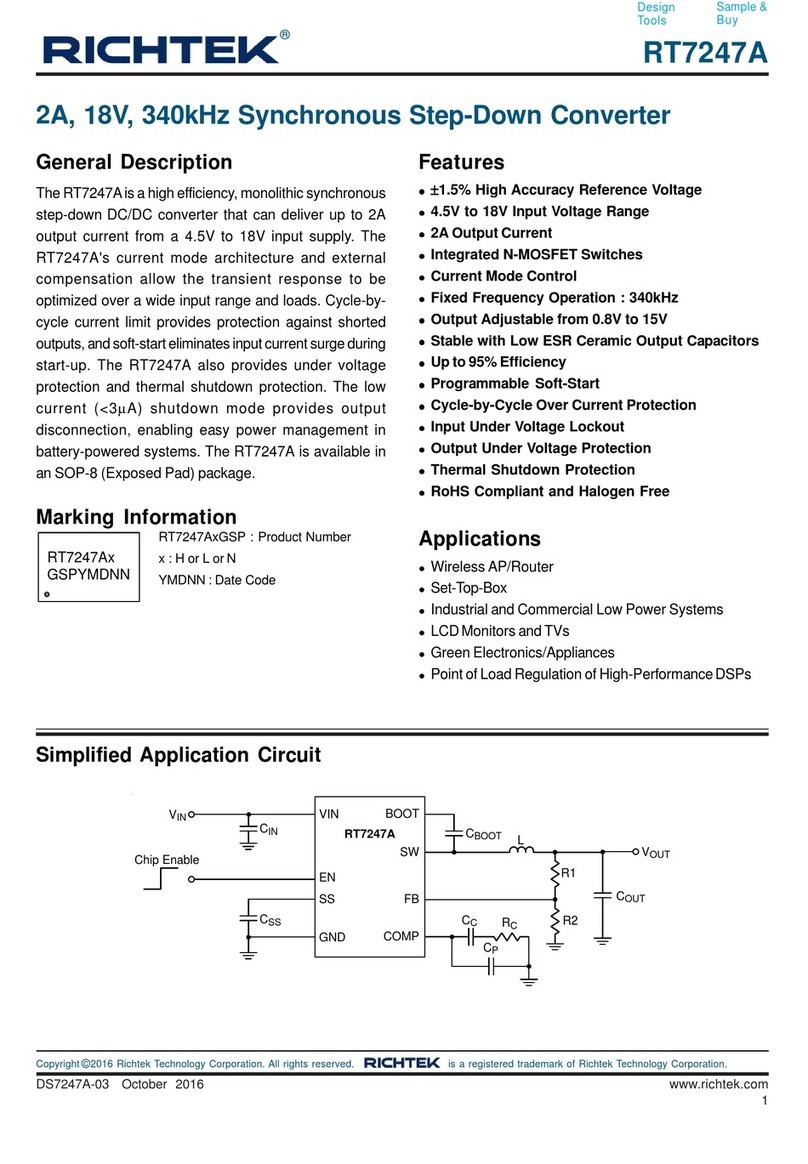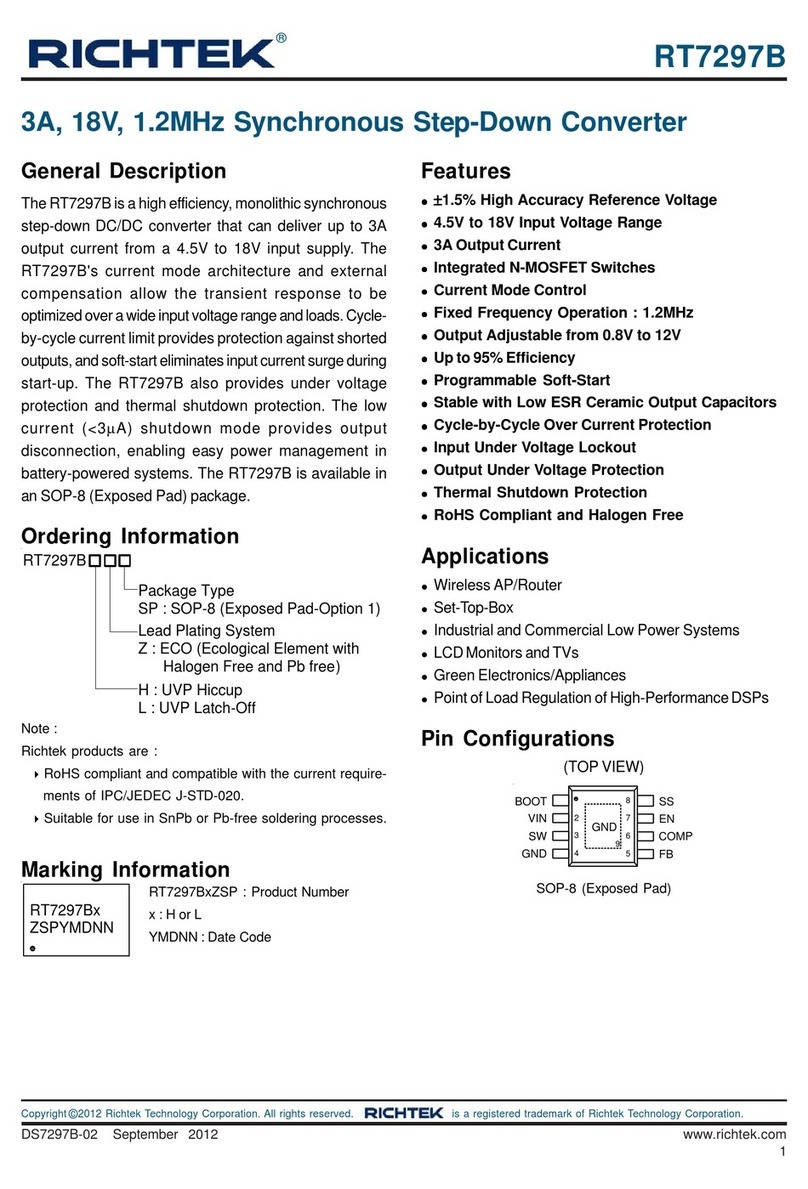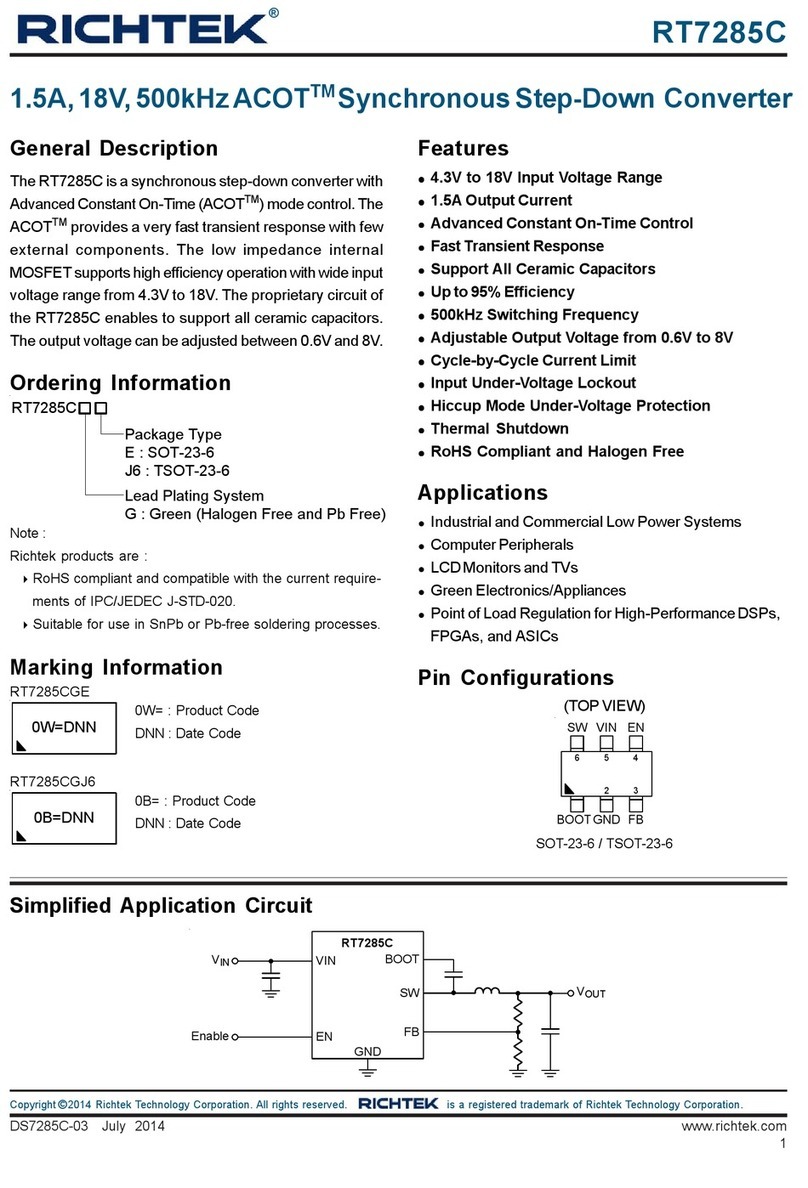RT8509A
8
DS8509A-00 November 2013www.richtek.com
©
Copyright 2013 Richtek Technology Corporation. All rights reserved. is a registered trademark of Richtek Technology Corporation.
Application Information
The RT8509A is a high performance step-up DC/DC
converter that provides a regulated supply voltage for panel
source driver ICs. The RT8509A incorporates current mode,
fixed frequency, Pulse Width Modulation (PWM) circuitry
with a built-in N-MOSFET to achieve high efficiency and
fast transient response. The internal driver power is
supplied from the VOUT pin and that will increase efficiency
when low input voltage condition. The following content
contains detailed description and information for
component selection.
BoostRegulator
The RT8509A is a current mode Boost converter integrated
with a 24V/5A power switch, covering a wide VIN range
from 2.8V to 14V. It performs fast transient responses to
generate source driver supplies for TFT-LCD display. The
high operation frequency allows the use of smaller
components to minimize the thickness of the LCD panel.
The output voltage can be adjusted by setting the resistive
voltage-divider sensing at the FB pin. The error amplifier
varies the COMP voltage by sensing the FB pin to regulate
the output voltage. For better stability, the slope
compensation signal summed with the current sense
signal will be compared with the COMP voltage to
determine the current trip point and duty cycle. The Boost
minimum gain ratio depends on minimum on-time. It's
suggested that VOUT higher than 1.2 x VIN for better
performance.
Soft-Start
The RT8509A provides soft-start function to minimize the
inrush current. When powered on, an internal constant
current charges an external capacitor. The rising voltage
rate on the COMP pin is limited from VSS = 0V to 1.24V
and the inductor peak current will also be limited at the
same time. When powered off, the external capacitor will
be discharged until the next soft-start time.
The soft-start function is implemented by the external
capacitor with a 5μA constant current charging to the soft-
start capacitor. Therefore, the capacitor should be large
enough for output voltage regulation. A typical value for
soft-start capacitor is 33nF. The available soft-start capacitor
range is from 10nF to 100nF.
OUT REF REF
R1
V = V x 1 , where V = 1.25V (typ.)
R2
The recommended value for R2 should be at least 10kΩ
without some sacrificing. Place the resistive voltage divider
as close as possible to the chip to reduce noise sensitivity.
Loop Compensation
The voltage feedback loop can be compensated with an
external compensation network consisting of R3. Choose
R3 to set high frequency integrator gain for fast transient
response and C1 to set the integrator zero to maintain
loop stability. For typical application, VIN = 5V,
VOUT = 13.6V, COUT = 4.7μF x 3, L1 = 4.7μH, while the
recommended value for compensation is as follows :
R3 = 56kΩ, C1 = 1nF.
Over-Current Protection
The RT8509A Boost converter has over-current protection
to limit the peak inductor current. It prevents the inductor
and diode from damage due to large current. During the
On-time, once the inductor current exceeds the current
limit, the internal LX switch turns off immediately and
shortens the duty cycle. Therefore, the output-voltage
drops if the over current condition occurs. The current
limit is also affected by the input voltage, duty cycle, and
inductor value.
Over-Temperature Protection
The RT8509A Boost converter has thermal protection
function to prevent the chip from overheating. When the
junction temperature exceeds 155°C, the function shuts
down the device. Once the device cools down by
approximately 10°C, it will automatically restart to normal
operation. To guarantee continuous operation, do not
operate over the maximum junction temperature rating of
125°C.
If CSS < 220pF, the internal soft-start function will be turned
on and period time is approximately 1ms.
Output Voltage Setting
The regulated output voltage is shown as the following
equation :






























